Sausage butties cost £11, but for some, echoes of the old Ancoats still remain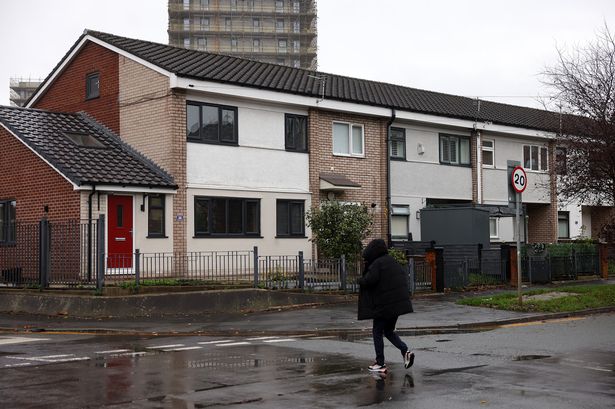 Weybridge Road in Ancooats(Image: Manchester Evening News)
Weybridge Road in Ancooats(Image: Manchester Evening News)
‘Oh god, you’re not moving to Ancoats are you?’
Margaret Lightbown was born and raised in neighbouring Miles Platting. She can still remember her mother’s reply when, in the early 1960s, she told her that she had secured a council house with her new husband just down the road.
Back then, the 78-year-old says, the area had a ‘bad reputation’. Now, that couldn’t be further from the truth.
Rapid redevelopment has seen Ancoats and New Islington become one of trendiest and most desirable areas to live anywhere in the city.
And new data shows it has undergone the biggest ‘gentrification’ of any part of England since 2019 – experiencing the largest improvement in deprivation score of any area in the country.
Join the Manchester Evening News WhatsApp group HERE
The Ministry of Housing, Communities and Local Government calculates scores for each area based on analysis of income, employment, education, health, crime, housing and the state of the local environment.
The Indices of Multiple Deprivation (IMD) are regarded as the most definitive method for identifying disadvantaged and poverty-stricken areas in the country, with the latest figures released earlier this month.
But in some corners of this part of the city, the figures tell a different story.
 New Islington Marina(Image: Manchester Evening News)
New Islington Marina(Image: Manchester Evening News)
The neighbourhood that’s home to Manchester City Football club is among the most deprived in the country. Officially referred to as ‘Manchester 062B’ in the government database, it stretches from the Etihad Stadium down to New Islington.
It is ranked 865th in the country. Whereas ‘Manchester 062D’ which contains the trendy new flats along Isaac Way is only ranked 26,699th.
According to the data, the freshly well-heeled neighbourhoods of Ancoats rub shoulders with some of the region’s most deprived.
Pollen Bakery, Flawd natural wine bar and Cask at the marina have become something of a symbol of the area’s ‘gentrification’. In the former, a sausage and egg butty will set you back £11.
Yet they lie, officially, within the borders of ‘Manchester 061C’ – which is more deprived than 89 per cen of neighbourhoods in the country, ranking 3,763th overall out of nearly 34,000.
Oddly, the flats to the left of Pollen fall inside ‘Manchester 061D’. This is among the city’s more well off places, being less deprived than 69 per cent of neighbourhoods in the UK, ranking 23,291th.
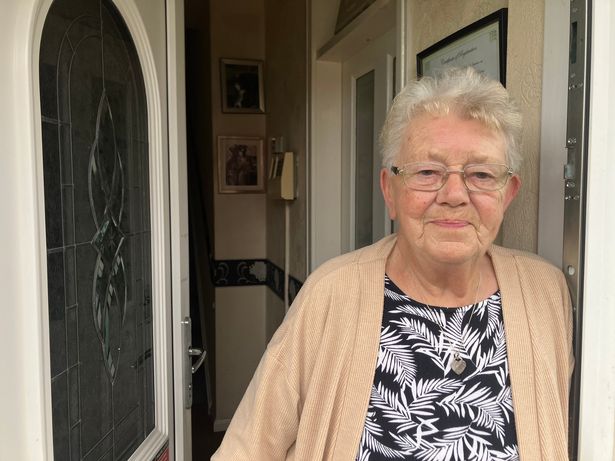 Margaret Lightbowne(Image: Manchester Evening News)
Margaret Lightbowne(Image: Manchester Evening News)
It has seen a dramatic turnaround. Back when deprivation scores were last released in 2019, ‘Manchester 061D’ was in the 10 percent most deprived. Only five other areas have seen bigger improvements – one in St. Helens, another in Croydon, one in Lambeth, one in Stoke-on-Trent and another in County Durham.
Nowhere is the change the area has undergone more visible than on Weybridge Road, just behind New Islington Marina. Council houses dating back to the 1960s sit next to brand new apartment blocks and terraced, modular homes.
Margaret can still remember the date she moved into her ex-council house. It was February, 4, 1970.
She paid £12,300 for her property in he early 2000s, which was valued at £35,000, under the ‘right to buy’ scheme.
”Now they’re going for £230,000” she says. “Even these old ones.”
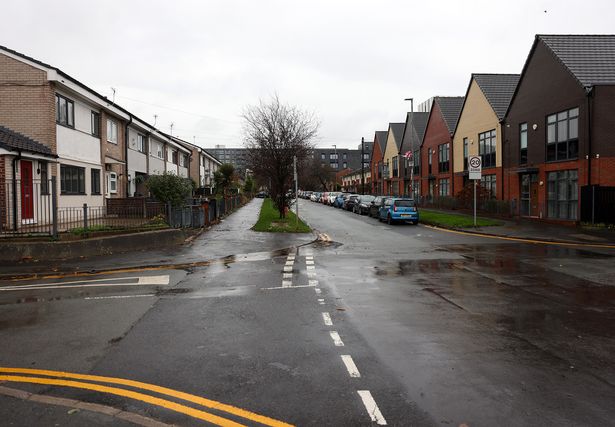 New homes have sprung up around the existing council properties(Image: Manchester Evening News)
New homes have sprung up around the existing council properties(Image: Manchester Evening News)
“It has changed enormously” she adds, looking at a recently built apartment bloc directly facing her home.
“There used to be a pub there,” she says. “The Crown. It used to be fun and games on a Saturday night. Now we have to look at those new flats.
“We have got used to it.”
The area across the road was once known as the ‘Cardroom Estate’. According to urban historians, in the 1980s and 1990s, it was a place ‘where the police wouldn’t go, where mail-order vans wouldn’t deliver, and where taxis wouldn’t drop off.’
“It was rough, really rough,” Margaret concurs. “There used to be big problems there with crime.”
The estate nestled behind the old Central Retail Park was slowly replaced through the 2000s and 2010s with the centrepiece of the redevelopment being New Islington Marina and Cotton Field Park.
New apartment blocks and rows of houses continue to spring up as demand soars, contributing in no small part to the area’s turnaround in the government deprivation data.
“That is a nice part of it,” Margaret says of the marina. “If you go down there it’s lovely.”
But, she adds, many of the longer-standing residents feel it’s “all young people”.
Pointedly, Margaret adds: “We don’t feel it’s for us.
 Patricia Mason(Image: Manchester Evening News)
Patricia Mason(Image: Manchester Evening News)
“We just feel as if we’re being overshadowed with all these things they are building. We have got facilities we didn’t have at that time, the tram stop, that kind of thing.
“But we have a lot of parking problems. It’s so handy for town that people leave their cars here and walk in, we never had that before.
“Also when people buy these apartments, they don’t want to pay for a parking spot inside so they leave it on the street and it creates havoc.
“Overall, I would say it’s changed for the better” she says. “Life itself hasn’t changed much. We have a good community here. I’ve got neighbours I’ve been friends with for 40 years.”
Patricia Mason, 53, moved into her council property 26 years ago, after being born and bred in the Cardroom estate.
Of the redevelopment of the surrounding area, she says: “This is the place to live now. I think it’s the location more than anything else.
“But the way they have been building has divided the community. There used to be a real sense of community here, but not now, it’s too different.
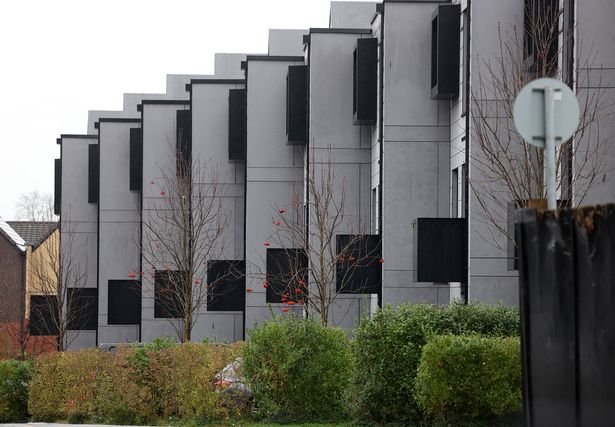 Some locals say there is a ‘tension’ between longstanding and newer residents(Image: Manchester Evening News)
Some locals say there is a ‘tension’ between longstanding and newer residents(Image: Manchester Evening News)
“Generally I’d say it’s got better, for crime and what have you, even though there’s still some car crime.
“I feel like we’re getting penned in, though, they’re building so much around us. There’s no space. They’re joining Ancoats to town, that’s what they’re trying to do.
“All the new shops and bars and stuff that have opened are far too dear for us.”
Pointing to New Islington Marina, she adds: “I do go down there sometimes to walk the dog. But on a summer’s day when they’re all sat out and looking at you, it’s a bit like we don’t belong there.
“When I have been here 53 years!
“[The newer residents] complain about a lot of things but we have seen it much, much worse. It’s not too bad and they are improving it. I’ve lived here all my life and I feel comfortable here.”
Neil Tate, 77, who lives on Saltford Avenue, also says there is something of a divide between those who have lived here decades, and those to have recently landed.
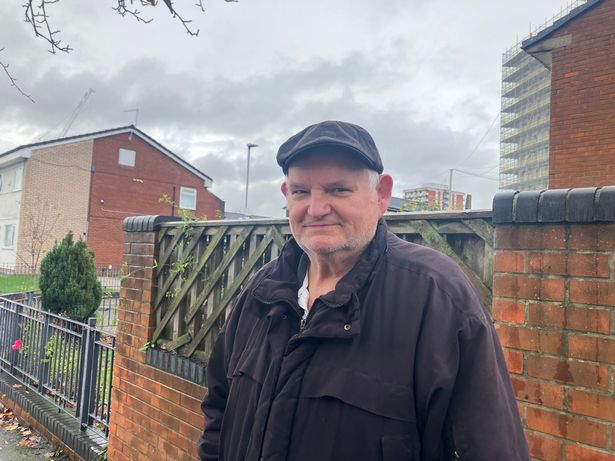 Neil Tate(Image: Manchester Evening News)
Neil Tate(Image: Manchester Evening News)
“It used to be really bad” he said. “When I moved into my house in 1990, it was full of drugs and needles the last tenants had left behind.
“Now it’s very quiet. Most of the flats have young people in and they’re working all day so you hardly ever see them. So there’s not much interaction. We just kind of co-exist really.
“A lot of them have dogs they walk around, but they walk around with their headphones in and they don’t look particularly happy. They seem quite lonely to me.
“The people who were here before may have been rough, but they knew who you were and they’d talk to you. It’s definitely lost a bit of its identity.
“The rents they are being charged are ridiculous. I spoke to a Dutch girl once who was paying over £1,000 a month, and that was a good few years ago now. I don’t know if it’s changed for the better or what. It’s pricing us out. It’s too expensive for us if we want to go out for a drink.
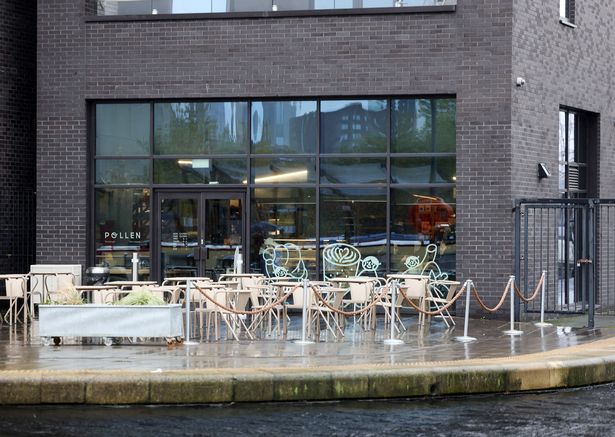 The popular Pollen bakery situated on waterside at the marina(Image: Manchester Evening News)
The popular Pollen bakery situated on waterside at the marina(Image: Manchester Evening News)
“There used to be a load of pubs and they’ve all gone. We’re not able to go to town as we can’t pay town prices. We wouldn’t go to the marina either, it’s not for us, its not for the older people. Its out of our league as pensioners.
“The city centre is moving out” Neil adds. “I think it will eventually move out past us but I will be dead and gone by then.”
Former city council worker Lillian Heathcote, 72, says: “Everyone wants to live here. I’m not sure why. There’s too many properties, and not enough green space. You can’t get a dentist, it’s hard to get a doctor’s appointment.
“Its nice to walk around. The people are nice enough. I have no problem with them. I just think there’s too many people.”
She says she shares Neil’s fears the remaining properties dating back decades ‘will eventually go’ but that ‘it will be after my time.’
“I think it would be a massive shame,” she says. “Because once they leave Ancoats, they won’t be able to get back in. And this is the real Ancoats. They will do anything for you.”
 Lillian Heathcote(Image: Manchester Evening News)
Lillian Heathcote(Image: Manchester Evening News)
George, 33, moved into a new home near the marina last weekend on a short-term let.
A City fan who was born in Rochdale and grew up in Salford, he saw the area’s change first hand whilst walking back to town from matches at the Etihad.
“The houses have always looked lovely, I love the quay and the cafe’s around here,” he says. “My mum was terrified when I told her.
“Ancoats used to be a ‘no go zone’ for her.
“So it’s kind of funny seeing how things change. I imagine there is that tension between development and injecting new life into spaces, but people feeling ostracised and the demographic changing as well. Because it does feel a bit separate.
“How it used to be clearly wasn’t tenable. But it’s getting that balance right between developing a place, and it being gentrified so people feel excluded from it. There’s hopefully a helpful middle ground there.
 A longstanding home next to a new apartment block(Image: Manchester Evening News)
A longstanding home next to a new apartment block(Image: Manchester Evening News)
“It can’t all be coffee shops and wine bars because not everyone can afford that. So have more parks and community spaces would help I think.”
Sean, 37, moved to his home near the marina from a converted warehouse near Piccadilly. He says: “It’s really nice. It’s near the city centre and has bars and stuff, but is quite quiet.
“When me and my partner came to look at this place we just really liked it. We’re right next to a bakery and some green space. Its a nice neighbourhood.
“We take walks down the canal so we walk past the estates. We know the area has changed loads over the past few years.
“Ultimately I think it’s good they are building a lot more houses and that a lot more people can live in Manchester. I’d like to see the council do more though to help the poorer parts of Manchester.”
